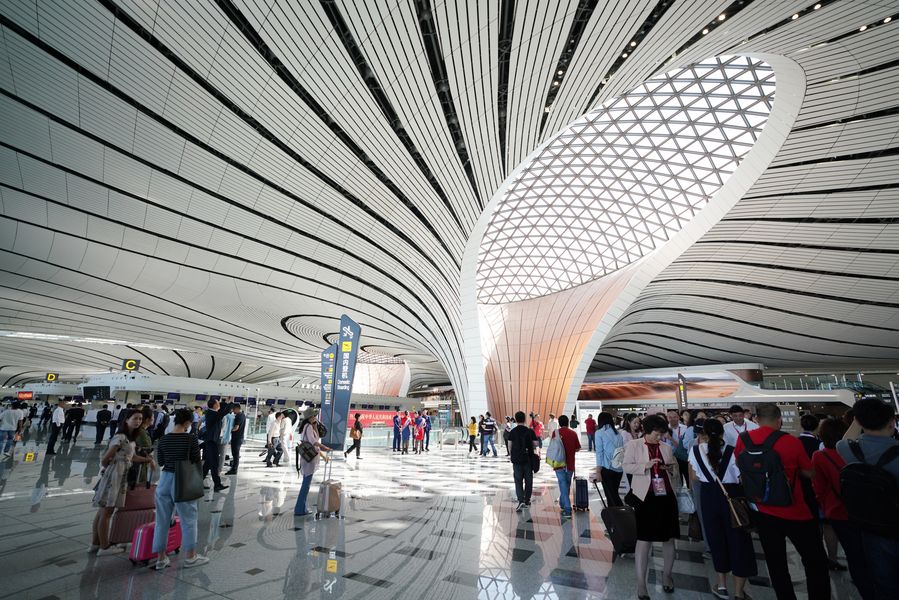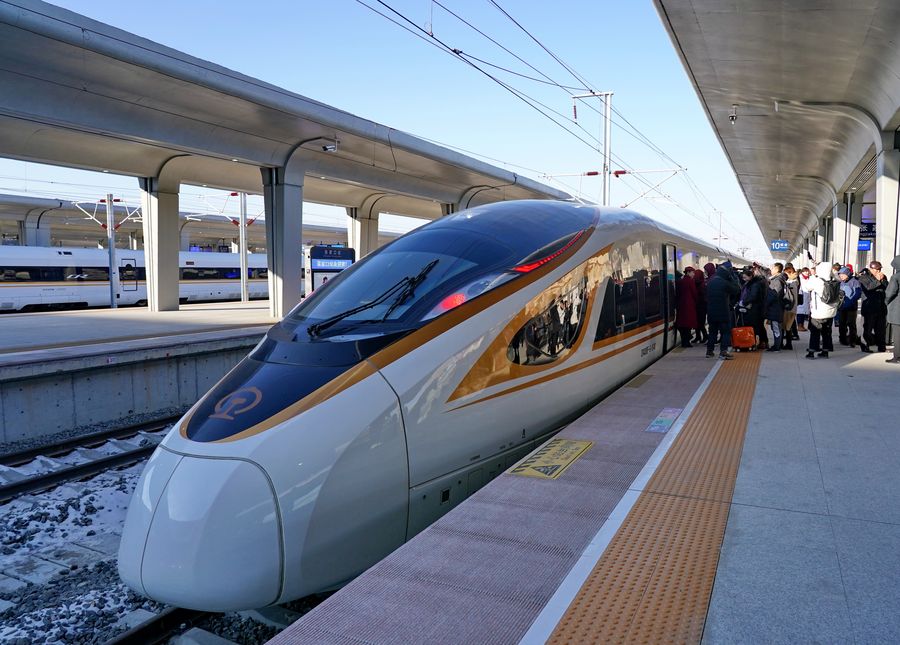Passengers on train K4051 wait for leaving at Beijing Railway Station in Beijing, capital of China, Jan. 10, 2020. The upcoming holiday for the Spring Festival, a traditional festival for family reunions, will run from Jan. 24 to 30, while the travel rush, also known as chunyun, will last 40 days from Jan. 10 to Feb. 18. (Xinhua/Ju Huanzong)
China is expected to see three billion trips during the Spring Festival travel rush, which will last 40 days from Jan. 10 to Feb. 18. With the operation of a new airport and several new high-speed railways, travel through China's capital city of Beijing has become more convenient.
BEIJING, Jan. 10 (Xinhua) -- China, the world's most populated country, on Friday ushered in its largest annual migration, 15 days ahead of the Spring Festival, or the Lunar New Year.
There will be three billion trips during the travel rush from Jan. 10 to Feb. 18 for family reunions and travel, slightly up from that of last year, according to a forecast from the National Development and Reform Commission (NDRC).
NDRC predicted an 8-percent growth in train trips, 8.4-percent increase in air trips and 9.6-percent hike in waterway trips.
The 40-day travel rush is known as chunyun in Chinese. The Lunar New Year falls on Jan. 25 this year, earlier than previous years, which brings a bigger challenge to the transport system as the return trips of college students overlap with the travel rush.
Over 300 million train tickets have been sold for the Spring Festival travel rush after the presale started on Dec. 12, 2019, said China's railway operator.

Passengers prepare to board planes at the terminal of Daxing International Airport in Beijing, capital of China, Sept. 25, 2019. (Xinhua/Ju Huanzong)
NEW TRANSPORT MEANS EASE TRAFFIC
With the operation of a new airport and several new high-speed railways, travel through China's capital city of Beijing has become more convenient.
Statistics from the North China subsidiary of the Air Traffic Management Bureau of China Civil Aviation Administration suggest that during the Spring Festival, the Beijing Daxing International Airport, which became operational in October 2019, will take the pressure off the Beijing Capital International Airport.
The Beijing Capital International Airport has planned 65,200 flights during the travel rush, down by 4 percent from last year. The Daxing International Airport will have 11,200 flights during the period. The two airports' combined number of flights will increase by 7 percent over the total number of flights via Beijing during the Spring Festival last year.
Flights to hot domestic destinations from the Beijing Capital International Airport are northeast Chinese cities famous for ice and snow tourism and southern vacation cities which enjoy warm weather in winter. While Japan and Southeast Asian countries are popular destinations for outbound tourists.
The Daxing International Airport mainly handles flights to hot domestic tourist destinations during the Spring Festival travel rush, including Chengdu, Guangzhou, Zhanjiang, Sanya, Kunming and Lijiang cities. More than 1.9 million passenger trips are expected via the airport during the period.

The high-speed train G2505 stops at Zhangjiakou Highspeed Railway Station in Zhangjiakou, north China's Hebei province, Dec. 30, 2019. (Xinhua/Yang Shiyao)
In addition to the new air hub, the Spring Festival travel rush is also the first major test for the high-speed railway service connecting Beijing and Zhangjiakou, which has been in operation for only 20 days.
The railway linking the co-host cities of the Beijing 2022 Winter Olympics boasts China's latest achievements in railway development from equipment manufacturing and new materials to new artificial intelligence technology. Zhangjiakou is now a hot winter sports destination. The railway received 200,000 passengers in the first 10 days of operation.
The train service reduces the travel time between Beijing and Zhangjiakou from over three hours to 47 minutes. ■
 简体中文
简体中文

